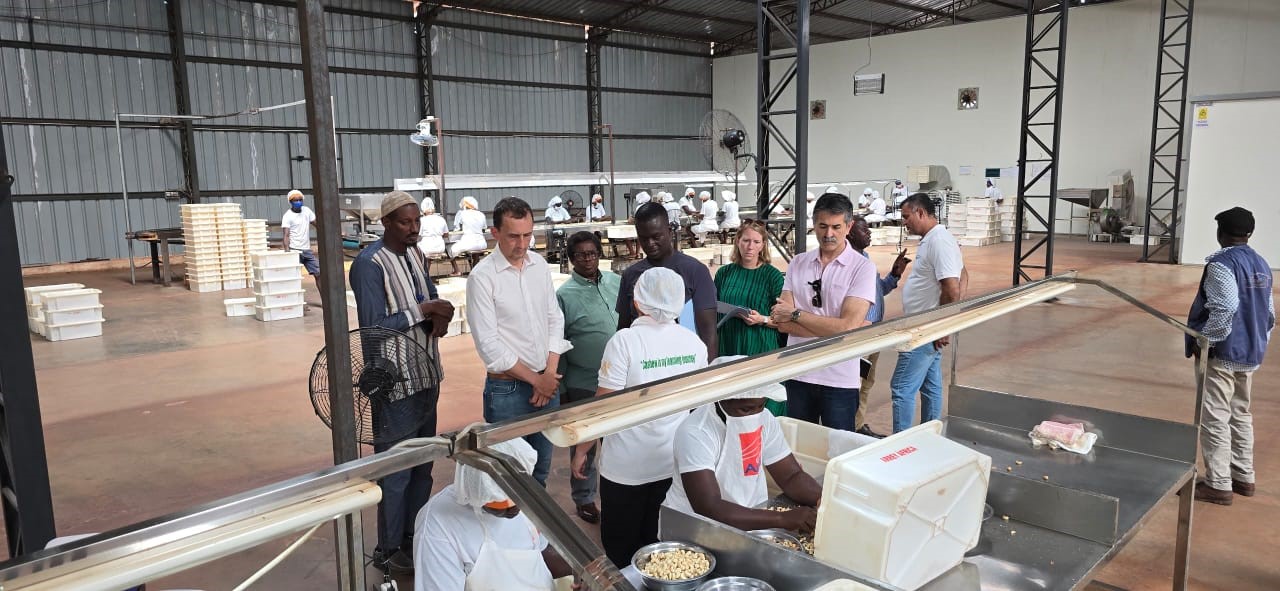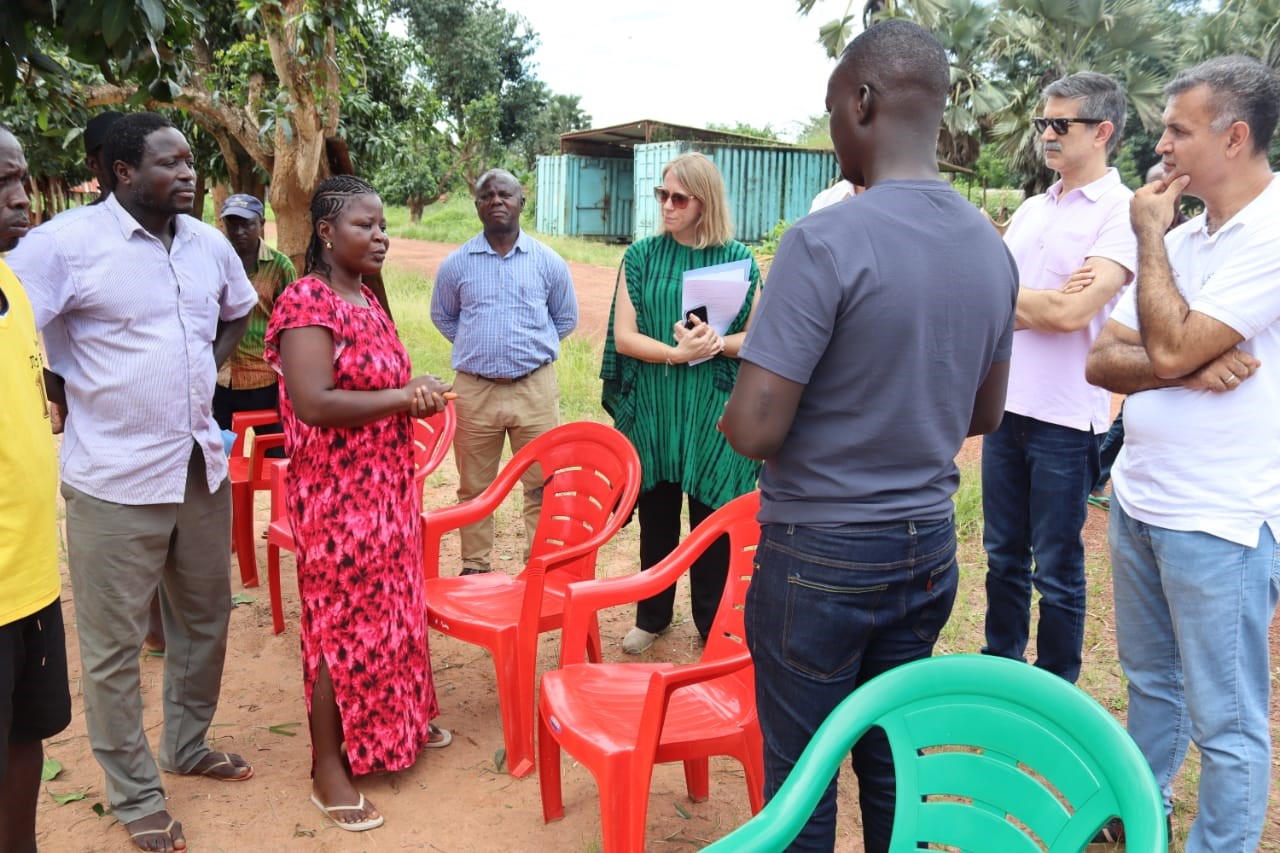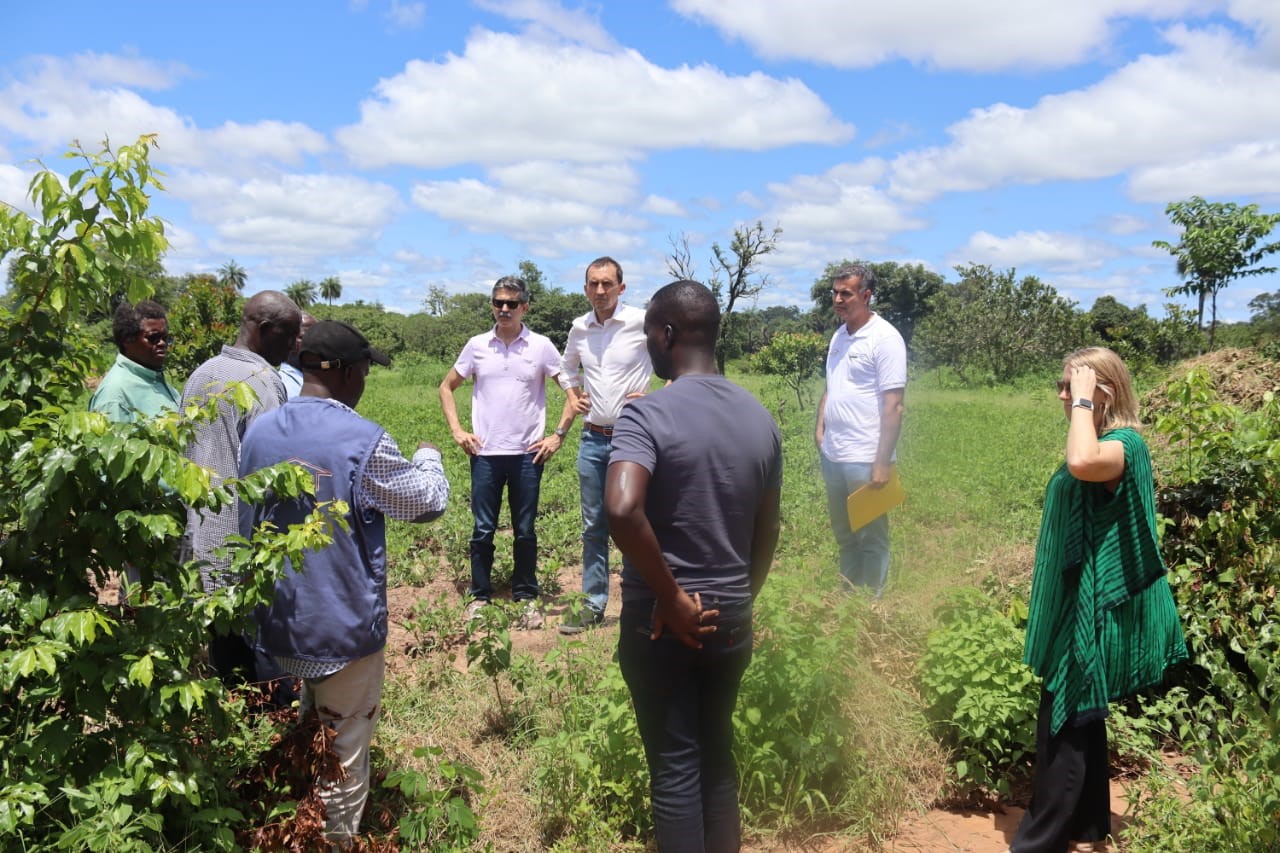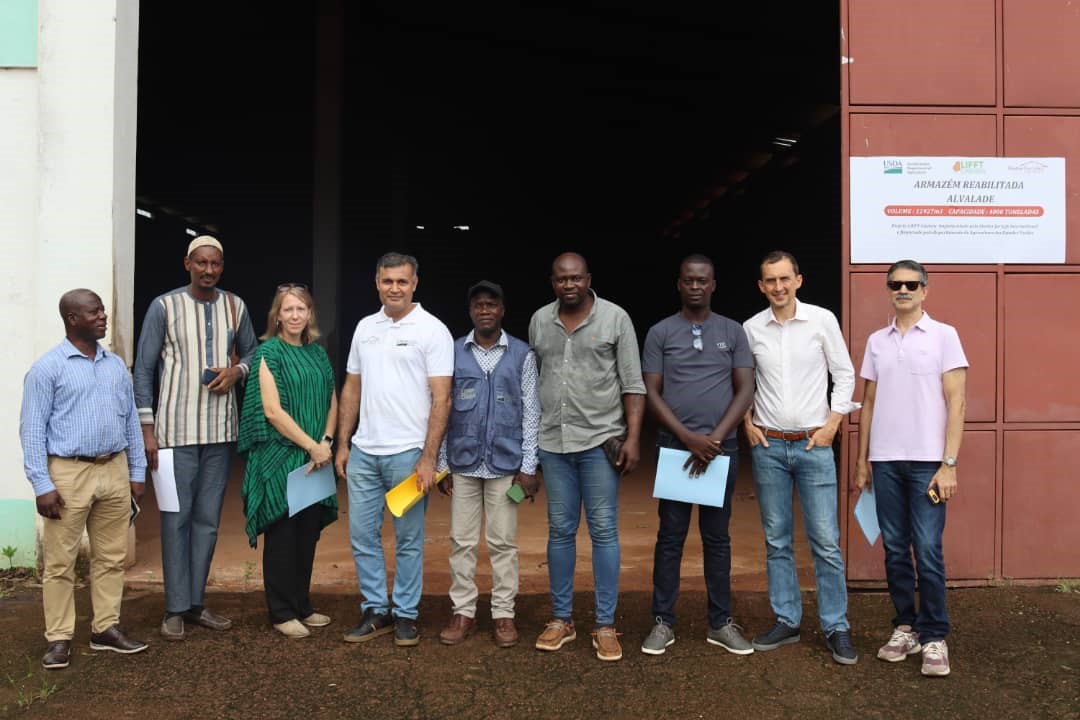The purpose of the mission was to find out about the support provided by the LIFFT-Cashew project in terms of construction and rehabilitation, as well as financing support for processing units.
Today, thanks to these efforts, the beneficiaries have explained how this has contributed to improving storage capacity and reducing post-harvest losses, as well as increasing the volume of transactions with buyers and sellers, which has considerably benefited their activities.
The other stage was a visit to the ARREY FOOD Company factory, to better understand the entire production cycle, from the arrival of raw materials to the distribution of the final product.

Visitors observed the improved access to these rural communities and discussed the road’s impact on the transportation of cashew nuts and other agricultural products.
However, local beneficiaries expressed their gratitude for the rehabilitation, highlighting how it has improved economic activities and access to markets, as well as the overall contribution to their livelihoods.


On the demonstration plot, farmers’ acceptance of GAP practices and how these techniques are being replicated and developed by the community.
The president of the cooperative pointed out that the demonstration plot revealed shortcomings in traditional practices and convinced the farmers to adopt improved methods, resulting in increased productivity. He also noted that the training provided by the LIFFT-Cashew project has had a positive influence on farmers’ behavior and will lead to long-term improvements. On behalf of the farmers, the head of the cooperative called for continued USDA support for the cashew sector, underlining its importance to Guinea-Bissau’s economy.
SFL PR/COM- BFS

